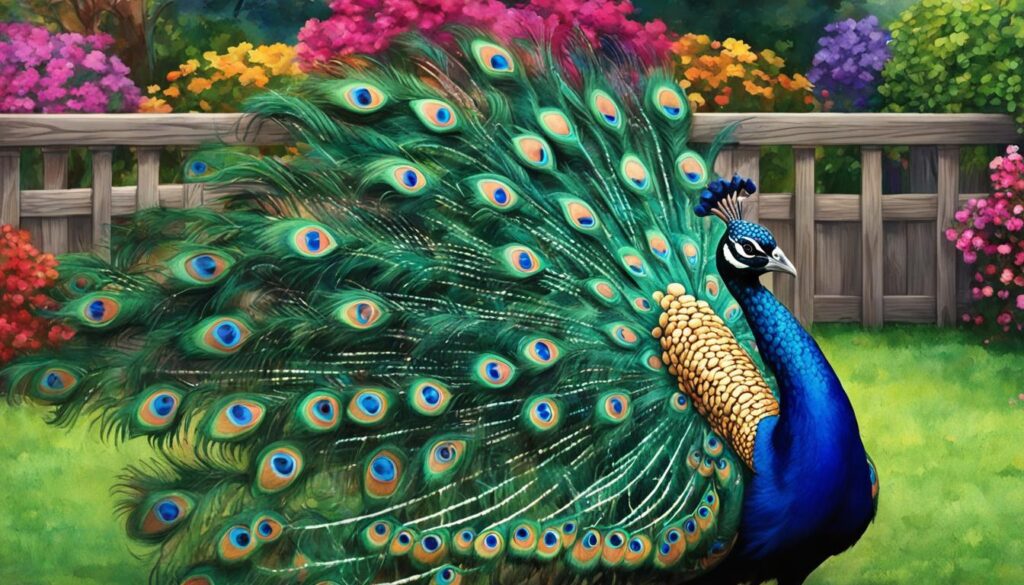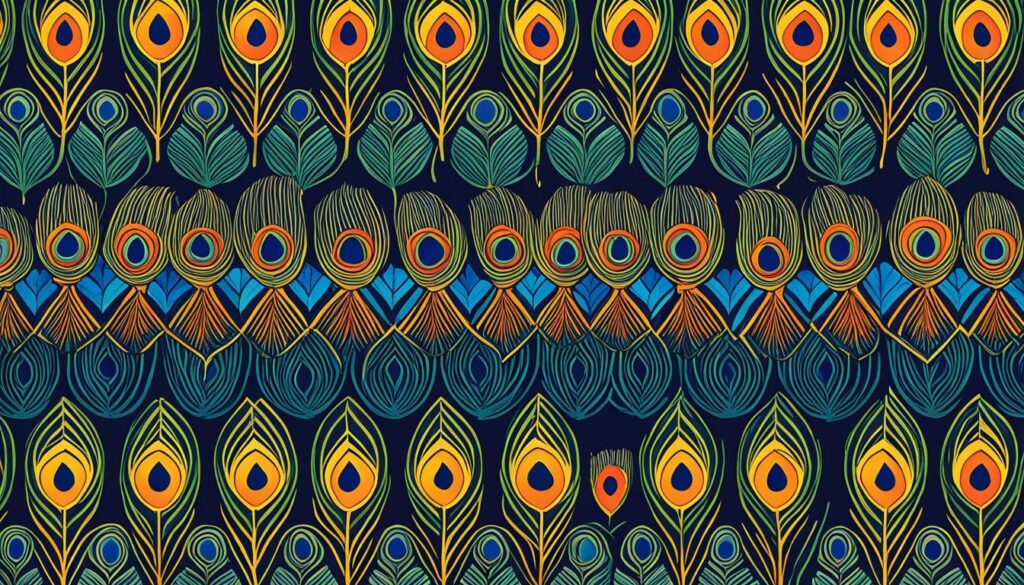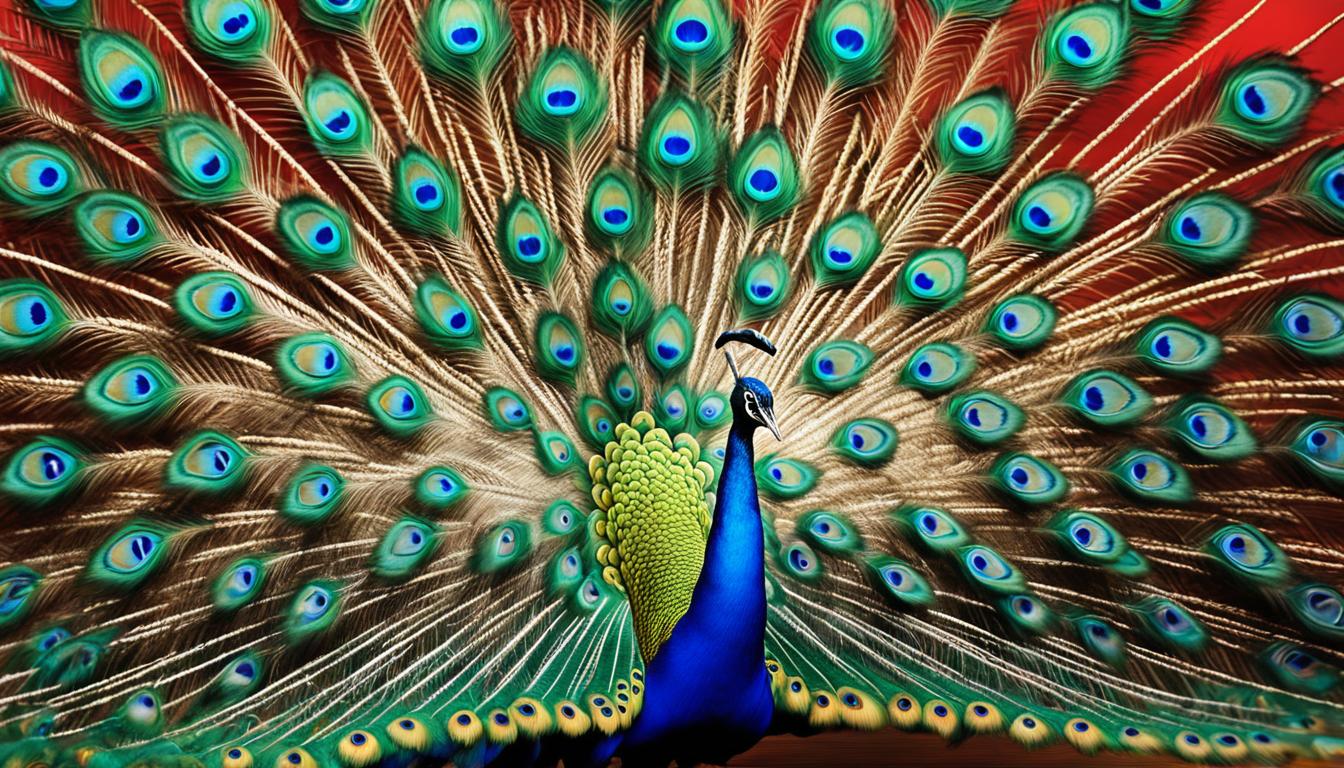Peacocks Dancing, written by Sharon Maas, is a captivating novel that takes readers on a journey through the life of Rita Maraj, a girl growing up in Guyana and India. This thought-provoking book explores themes of love, identity, and the quest for self-discovery. In this article, we will provide a concise summary of Peacocks Dancing, highlighting its key plot points and themes.
Key Takeaways:
- Peacocks Dancing is a captivating novel by Sharon Maas.
- The book follows the life of Rita Maraj, a girl growing up in Guyana and India.
- Themes of love, identity, and self-discovery are explored throughout the story.
- Rita’s relationships and her journey to discover her roots play a significant role in the narrative.
- Peacocks Dancing portrays strong female characters challenging societal norms.
Introduction to Peacocks Dancing
Peacocks Dancing is not Sharon Maas’s first published novel, but it captures her talent for storytelling and character development. Set in Guyana and India, Peacocks Dancing follows the journey of its central character, Rita Maraj. With its vibrant setting and compelling protagonist, the book is a captivating exploration of love, identity, and self-discovery.
Sharon Maas’s skillful narrative transports readers to the rich landscapes of Guyana and India. Through vivid descriptions and engaging storytelling, she brings these settings to life, immersing readers in the vibrant cultures and traditions of these regions. Peacocks Dancing serves as a beautiful backdrop for Rita’s transformative journey, as she navigates the complexities of her own heritage.
As the story unfolds, readers are introduced to Rita Maraj, a young girl whose unique personality sets her apart. Rita possesses a deep fascination for life, and her love for words and storytelling becomes a prominent theme throughout the book. Her journey is filled with self-discovery, as she learns to reconcile her mixed heritage and navigate the complexities of her relationships.
Peacocks Dancing intricately weaves together themes of identity, cultural heritage, and the strength of female characters. Through Rita’s quest for self-discovery, readers are invited to reflect on their own journeys and the importance of embracing one’s roots. The novel also explores the resilience and empowerment of its female characters, challenging traditional gender roles and showcasing the strength that lies within.
Rita’s Childhood and Quirky Personality
Rita Maraj, a captivating character in Peacocks Dancing, is introduced as a young girl of both black and Indian descent. Throughout the book, her deep fascination for life is evident, accompanied by a love for words and storytelling.
During her childhood, Rita develops a unique personality that sets her apart. Her quirky nature and vibrant imagination add a touch of charm to her character. Rita’s vivid descriptions and engaging narratives draw others into her world, allowing readers to experience her perspective.
One notable aspect of Rita’s personality is her close connection with nature. She finds solace and inspiration in the natural world around her, immersing herself in its beauty and tranquility. Whether it’s observing the intricate patterns of peacock feathers or the vibrant colors of blooming flowers, Rita’s appreciation for nature shines throughout the story.
Despite her creative spirit, Rita faces struggles with academics. She grapples with traditional schooling methods that don’t align with her unique learning style. However, her determination and resilience help her navigate these challenges, pushing her to seek alternative methods of learning and self-expression.
“Rita’s childhood was a tapestry of vibrant imagination and curious exploration. She found joy in the smallest wonders of the natural world, exuding a contagious enthusiasm for life”
Rita’s Relationships and Stepfamily Dynamic
As Rita navigates the complexities of growing up, her relationships with her stepmother, Marilyn, and her half-sister, Isabelle, become increasingly intricate. The stepfamily dynamic in Peacocks Dancing is a central aspect of the narrative, shedding light on the contrasting personalities and tensions within Rita’s family.
Rita’s relationship with Marilyn is marked by a blend of love, resentment, and misunderstanding. Marilyn, portrayed as a sharp and opinionated woman, often clashes with Rita’s free-spirited nature. Their interactions are characterized by an underlying power struggle and a constant quest for acceptance.
On the other hand, Rita’s relationship with Isabelle reflects the complexities of sibling dynamics. Isabelle, being Rita’s half-sister, often struggles with feelings of jealousy and insecurity, leading to occasional conflicts between the two. However, amidst their differences, a deep bond rooted in shared experiences and sisterly love begins to develop.
Rita’s relationships with Marilyn and Isabelle serve as a compelling exploration of the challenges and complexities that arise within stepfamilies. Sharon Maas masterfully captures the contrasting personalities and emotions, offering readers a glimpse into the intricacies of familial relationships.
The stepfamily dynamic in Peacocks Dancing highlights the universal themes of love, acceptance, and the pursuit of harmony within blended families. It is a poignant portrayal of the struggles and triumphs of navigating relationships in a non-traditional family structure.

Key Points:
- Rita’s relationships with Marilyn and Isabelle are central to the narrative.
- The relationship with Marilyn is marked by love, resentment, and a constant search for acceptance.
- Rita and Isabelle’s bond evolves through shared experiences and sisterly love.
- The stepfamily dynamic explores universal themes of love, acceptance, and the pursuit of harmony within blended families.
Kamal and Rita’s Intersecting Paths
The narrative of Peacocks Dancing takes a fleeting detour to the vibrant landscapes of India, where we meet Kamal, a young boy yearning to escape the confinements of his palace life. As fate would have it, Kamal’s path converges with that of our protagonist, Rita Maraj, resulting in a series of events that intertwine their lives.
Kamal, burdened by the weight of tradition and societal expectations, dreams of breaking free and exploring the world beyond his aristocratic upbringing. Rita, on the other hand, seeks answers to her own questions of identity and heritage, leading her on a transformative journey. When their destinies collide, their connection sparks a new chapter in their lives, brimming with challenges, discoveries, and shared experiences.
“Our paths converged at a pivotal moment, each carrying our own hopes and dreams,” Rita muses. “Little did we know how our intersecting paths would shape our futures.”
Rita’s Journey to Discover Her Roots
Rita’s search for her identity takes her on an emotional journey to India, where she hopes to find answers about her familial roots. Determined to connect with her heritage, she sets out to meet her wealthy relatives and explore the land that holds the key to her past.
During her journey, Rita encounters various challenges that test her perseverance and push her to confront difficult truths. One particular issue that deeply affects her is the prevalent issue of child prostitution in India. In her quest to discover her roots, Rita becomes actively involved in raising awareness about this grave issue and advocating for the rights of these vulnerable children.
Through her involvement, she not only uncovers her own lineage but also becomes a voice for those who are silenced by society. Her journey becomes a powerful exploration of self-discovery, cultural awareness, and social responsibility.
As Rita immerses herself in the rich tapestry of Indian culture, she begins to piece together the puzzle of her ancestry and gain a deeper understanding of herself. Her journey is not only about exploring her familial connections, but also about embracing her mixed heritage and finding her place in the world.
Throughout her travels, Rita encounters people from diverse backgrounds who help shape her perspective and broaden her horizons. She learns valuable life lessons, forms deep connections, and discovers the beauty of embracing her roots.
“My journey to discover my roots has been both challenging and transformative. It has allowed me to connect with my past, unravel the complexities of my identity, and make a meaningful impact in the lives of others.” – Rita Maraj
Challenges Encountered by Rita on Her Journey
| Challenge | Description |
|---|---|
| Language Barrier | Overcoming communication obstacles in a foreign country |
| Cultural Differences | Adapting to unfamiliar customs and traditions |
| Emotional Turmoil | Confronting personal emotions and facing difficult truths |
| Social Activism | Raising awareness about child prostitution and advocating for change |
Rita’s journey to discover her roots is a transformative experience that not only shapes her identity but also impacts the lives of those she encounters along the way. It is a testament to the power of self-discovery and the significance of embracing one’s heritage.
Themes of Identity and Cultural Heritage
Peacocks Dancing delves into themes of identity and cultural heritage. Through the protagonist Rita’s journey to discover her roots and reconcile her mixed heritage, the novel explores the complex layers of one’s sense of self and the importance of cultural background. Rita’s quest for identity adds depth to the narrative and allows readers to reflect on their own personal experiences.
Throughout the book, Sharon Maas masterfully weaves together the impact of cultural heritage on individuals, highlighting the challenges faced by those who straddle multiple cultural identities. Rita’s mixed heritage shapes her understanding of the world and influences her perceptions and relationships.
“Our cultural heritage defines us, it shapes our worldview and influences our actions. It is the essence of who we are and where we come from.”
The exploration of cultural heritage in Peacocks Dancing serves as a catalyst for Rita’s character development. As she unravels the layers of her identity, Rita is forced to confront her past, make peace with her background, and embrace all the facets that make her who she is.
The novel beautifully captures the significance of cultural heritage in shaping individual and collective identities, as well as the resilience and strength that can arise from the exploration and celebration of one’s roots. Sharon Maas’s storytelling honors the richness and diversity of cultural heritage and serves as a testament to the universal quest for self-discovery.

Example Quotes:
“Our roots give us a sense of belonging and provide a foundation from which we build our lives.”
“Identity is a tapestry woven by the threads of our cultural heritage.”
The Strength of Female Characters
In Peacocks Dancing, the author skillfully portrays a diverse range of female characters who defy societal expectations and exhibit remarkable strength and resilience. These women challenge traditional gender roles and navigate the complexities of love, identity, and cultural heritage. From the protagonist, Rita Maraj, to her grandmother Granny and even her stepmother Marilyn, the female characters in this novel leave a lasting impression.
One of the most significant female characters in Peacocks Dancing is Rita Maraj. Despite the challenges she faces, Rita’s determination and unwavering spirit shine through. Through her experience, readers witness her growth and transformation as she navigates her mixed heritage and the complexities of her relationships. Rita’s journey to discover her roots becomes a testament to the strength of her character.
“I may be a woman, but I am capable of so much more than society expects of me. I will fight for my dreams and prove that strength knows no gender.” – Rita Maraj
Rita’s grandmother, Granny, is another powerful female presence in the novel. Wise and resilient, she becomes a guiding light for Rita, imparting invaluable life lessons and helping her embrace her heritage. Granny’s strength lies not only in her independence, but also in her ability to love unconditionally and support Rita in her journey of self-discovery.
Even Marilyn, Rita’s stepmother, challenges traditional gender roles. Despite initially being portrayed as a stern figure in Rita’s life, Marilyn’s character evolves throughout the story. She breaks free from the limitations placed on her and fights for her own happiness, proving that strength and independence can be found in unexpected places.
Critiques and Praise for Peacocks Dancing
Despite the overall acclaim, Peacocks Dancing is not without its fair share of critiques and praises. The novel has garnered attention for its vivid storytelling and dynamic characters, drawing readers into the world of Rita Maraj and her journey of self-discovery. However, some readers have voiced concerns over certain aspects of the book, particularly regarding its pacing and ending.
One common critique revolves around the pacing of the story. Some readers feel that the narrative unfolds at a leisurely pace, which may hinder the overall tension and suspense. However, others appreciate the deliberate pacing, as it allows for a more immersive and atmospheric reading experience.
Another point of contention is the ending of the book. While the conclusion satisfies some readers, others find it abrupt or unresolved. The open-ended nature of the ending has sparked discussions among readers, with differing interpretations and preferences.
Nevertheless, the majority of readers praise Peacocks Dancing for its captivating storytelling and well-developed characters. Sharon Maas’s ability to paint vibrant scenes and invoke deep emotions has been lauded by many. The book’s exploration of love, identity, and cultural heritage resonates with readers seeking thought-provoking narratives.
“Peacocks Dancing invites readers on a journey filled with rich prose and captivating characters. Maas’s storytelling prowess shines through, immersing readers in the vibrant landscapes of Guyana and India.” – Literary Critic
Overall, Peacocks Dancing has captivated readers with its evocative storytelling and complex characters, earning both critiques and praise. The novel’s ability to transport readers to different worlds and explore profound themes has solidified its place as a notable piece of fiction.
Impact and Legacy of Peacocks Dancing
Peacocks Dancing has had a profound impact on readers, leaving a lasting legacy within the realm of multicultural narratives and stories of self-discovery. Sharon Maas’s masterful storytelling and rich character development have garnered praise and captivated audiences around the world.
This poignant novel explores themes of identity, cultural heritage, and the pursuit of personal truth. Through the journey of Rita Maraj, readers are immersed in a world of diverse experiences, where love, loss, and resilience intersect.
Peacocks Dancing has resonated with those seeking narratives that challenge societal norms and celebrate the strength of the human spirit. The novel’s exploration of dual heritage and the complexities of family dynamics have sparked conversations and provided a platform for discussions on cultural identity and personal growth.
“Peacocks Dancing is a beautifully written novel that takes readers on a transformative journey of self-discovery. Maas weaves together intricate storylines and vivid descriptions, creating a tapestry of emotions and experiences that will stay with readers long after they finish the book.” – Emma Thompson, Book Reviewer
The legacy of Peacocks Dancing lies not only in its impact on readers but also in its contribution to Sharon Maas’s body of work. Maas’s ability to craft compelling narratives imbued with depth and authenticity has solidified her reputation as a skilled storyteller. Peacocks Dancing stands as a testament to her talent and further establishes Maas as a leading voice in contemporary literature.
Through its engaging storytelling and thought-provoking themes, Peacocks Dancing will continue to leave an indelible mark on readers, inspiring conversations about cultural heritage, personal growth, and the universal quest for identity.
Key Takeaways:
- Peacocks Dancing has made a significant impact on readers, particularly those interested in multicultural narratives and stories of self-discovery.
- The novel’s exploration of themes such as identity and cultural heritage resonates with readers on a deep level.
- Sharon Maas’s storytelling prowess and memorable characters have contributed to the enduring legacy of Peacocks Dancing.
| Impact | Legacy |
|---|---|
| Resonates with readers interested in multicultural narratives and self-discovery | Contributes to Sharon Maas’s reputation as a skilled storyteller |
| Sparks conversations on cultural identity and personal growth | Establishes Peacocks Dancing as a standout work in contemporary literature |
| Inspires and provokes thoughtful discussions | Leaves a lasting mark on readers |
Conclusion
Peacocks Dancing by Sharon Maas is a captivating novel that takes readers on an immersive journey filled with love, growth, and cultural exploration. Maas’s skillful storytelling and memorable characters make this book a must-read for fans of diverse literature.
The story revolves around Rita Maraj, a girl of mixed heritage, as she navigates her way through complex relationships, embarks on a journey to discover her roots, and grapples with questions of identity. Peacocks Dancing beautifully explores themes of self-discovery, the strength of female characters, and the significance of cultural heritage.
Readers are drawn into the vividly depicted settings of Guyana and India, and the narrative weaves a compelling tale of resilience, identity, and the power of connection. The pacing of the story keeps the reader engaged, while the ending leaves a lasting impact.



